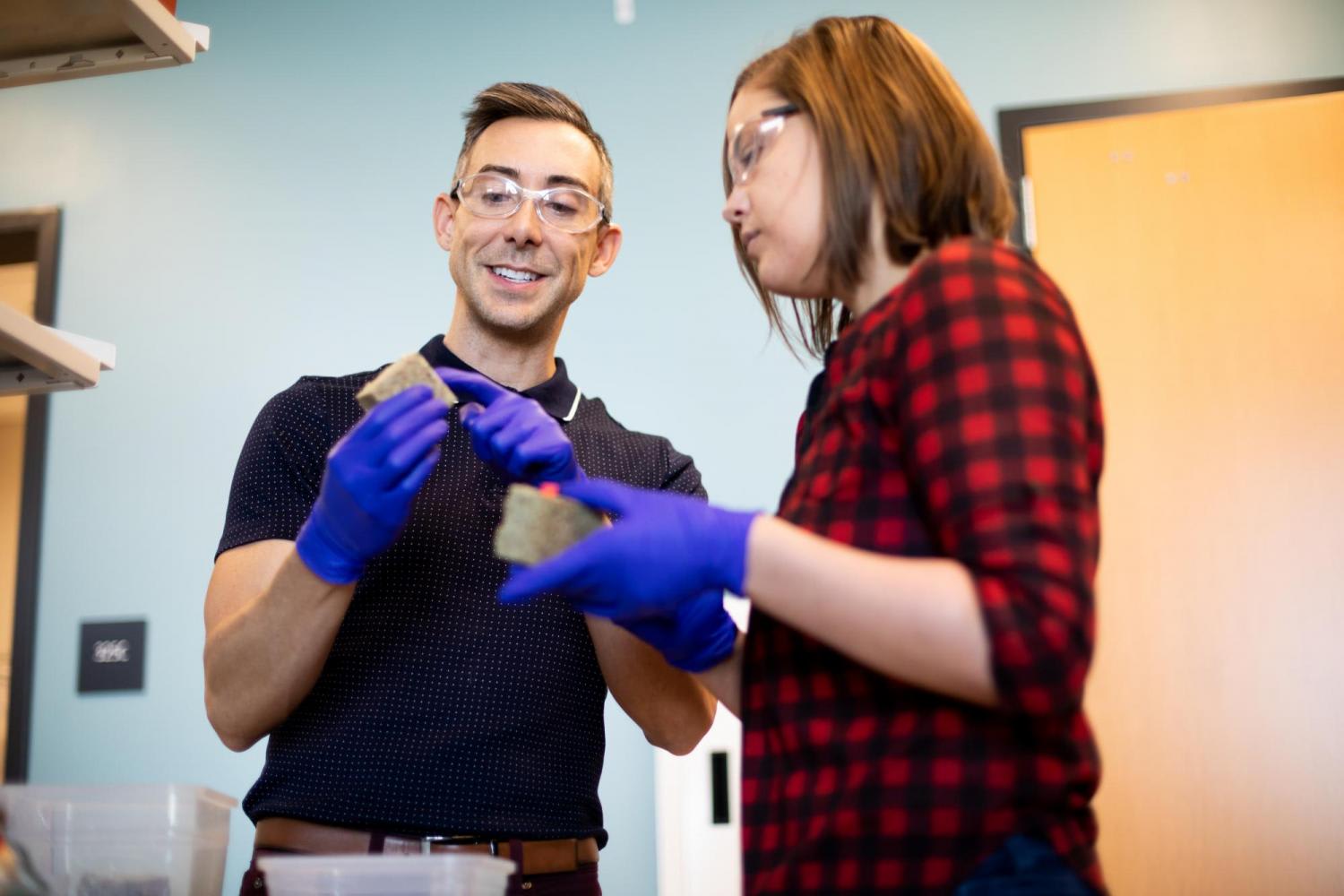Scientists in the US have created recipe for bricks that grow and regenerate thanks to a strain of active bacteria.
The team at University of Colorado, Boulder believes it could point the way to a new, durable building material that replaces concrete.
But unlike concrete, whose production pumps carbon dioxide into the atmosphere, this material absorbs CO2 as it grows with the speed of microbial reproduction.
“We already use biological materials in our buildings, like wood, but those materials are no longer alive,” said Wil Srubar, an assistant professor in the Department of Civil, Environmental and Architectural Engineering (CEAE).
“We’re asking: Why can’t we keep them alive and have that biology do something beneficial, too?”
He and colleagues experimented with cyanobacteria belonging to the genus Synechococcus. Under the right conditions, these microbes eat carbon dioxide to grow and make calcium carbonate—the main ingredient in limestone and cement.
To set the process off, researchers inoculate colonies of cyanobacteria into a solution of sand and gelatin. With treatment, the calcium carbonate produced by the microbes mineralise the gelatin which binds together the sand, forming a brick.
In the study, the team found that under a certain humidity conditions, they have about the same strength as the mortar used by contractors today.
“You can step on it, and it won’t break,” Srubar said.
The bricks are also self-regenerating. Chop one in half, and each of half can grow itself into a new brick.
What sets this technique apart is the longevity of the bacteria. According to the group’s calculations, between 9-14% of the bacterial colonies in the bricks were still alive after 30 days, with three distinct generations surviving in brick form.
They say that, in contrast, bacteria added to concrete to impart self-healing properties tend to have survival rates of less than 1%.

Wil Srubar and CU Boulder graduate student Sarah Williams in the lab (CU Boulder College of Engineering and Applied Science)
Srubar believes the potential is vast.
“We know that bacteria grow at an exponential rate,” he said. “That’s different than how we, say, 3D-print a block or cast a brick. If we can grow our materials biologically, then we can manufacture at an exponential scale.”
There is much work to do before that happens, however.
Cyanobacteria need humid conditions to survive, which is a problem in dry climates. So, the team is working to engineer microbes that are more resistant to drying out so they remain alive and functional.
Srubar imagines a future in which suppliers could mail out sacks filled with the desiccated ingredients for making living building materials. Just add water, and people on site could begin to grow and shape their own microbial homes.
“Nature has figured out how to do a lot of things in a clever and efficient way,” Srubar said. “We just need to pay more attention.”
The study’s lead author is Chelsea Heveran, a former postdoctoral research assistant at CU Boulder, now at Montana State University.
She said: “Though this technology is at its beginning, looking forward, living building materials could be used to improve the efficiency and sustainability of building material production and could allow materials to sense and interact with their environment.”
Their research was published yesterday in the journal, Matter.
Top image: A mould for shaping bricks made out of living materials (CU Boulder College of Engineering and Applied Science)















